Features of the repair of swimming pools and equipment
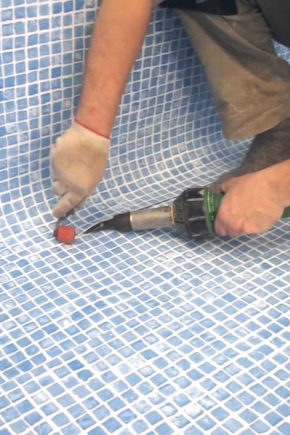
If the integrity of the pool shell is violated, do not get upset. If there is a leak, this is not a sentence. It can be repaired on a temporary and permanent basis, and even under water.
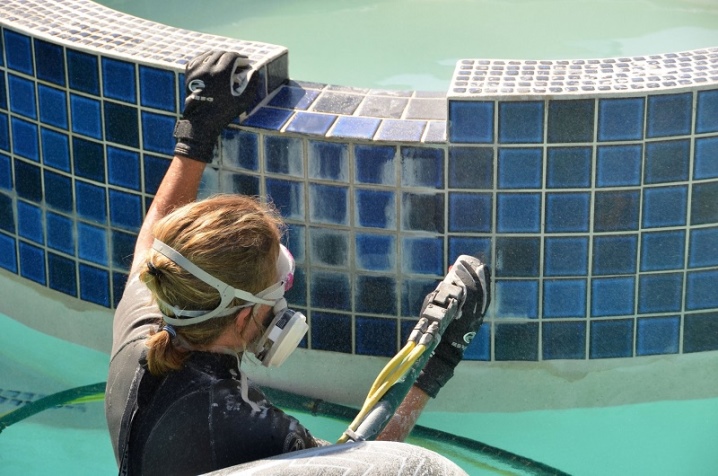
How to prepare for work?
Repairs are planned - usually at the end or before the start of a new swimming season, and unexpected, when a leak is found in the pool bowl or there is an urgent need to repair the pool equipment. If the malfunctions are of increased complexity, then it would be better to turn to specialists for whom this is the main type of activity and they know every last detail about such problems. But there are also simple breakdowns that you can eliminate yourself. ...
These include the elimination of small leaks in the basin of the reservoir, as well as replacement of backlight lamps and water purification filters.
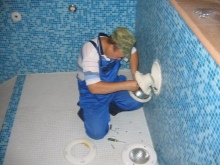
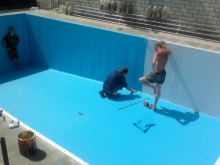
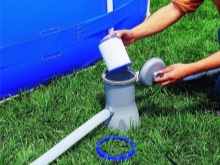
If the site does not have a concrete pool, but an inflatable or frame one, then it is always advisable to have a repair kit on the farm that will help eliminate small problems very quickly and efficiently. It can be bought immediately in the same store where you purchased the tank itself or the elements for the reservoir. The most necessary things for a quick repair:
- scotch tape or plaster;
- tape glued in water;
- a set of self-adhesive patches;
- waterproof glue;
- solution for degreasing surfaces (acetone, solvent, etc.)
- spare lamps and filters;
- sealant.
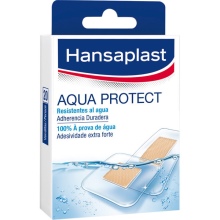

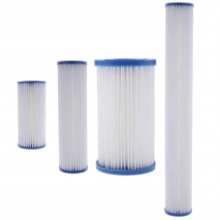
You shouldn't save on such a set, remember that the miser pays twice. Keep in mind that this kit is only suitable for urgent, short-term repairs. For a better solution to the problem at a stationary pool, you should invite professionals, and an inflatable one can be taken to a workshop and vulcanized.

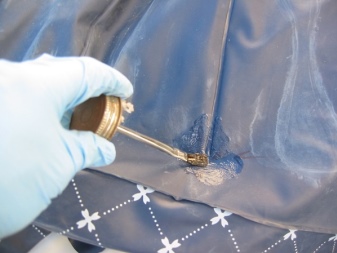
Pool bowl repair
You can do some simple work with your own hands to eliminate the uncontrolled decrease in water. Pools made from different materials require different approaches. Consider the main types of materials used in the construction of domestic reservoirs and ways to eliminate leaks.
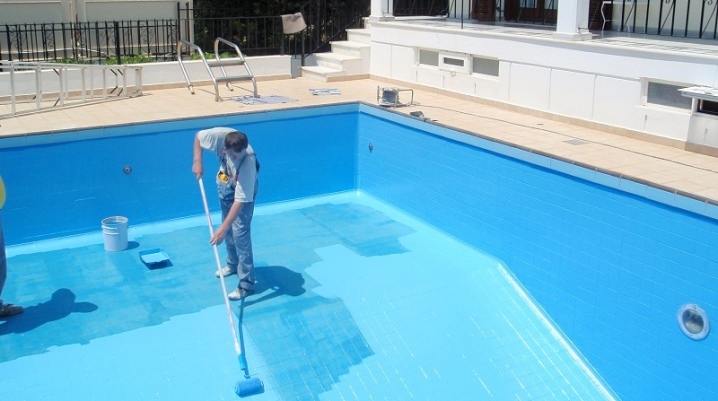
Concrete
Quite often, suburban home ponds are made concrete. It is an inexpensive and widely used material for stationary pools. If you have determined that the water leaves the pool through some unintended hole, and does not naturally evaporate from the heat, then you will have to drain the tank for fault detection.
The work technology is quite simple.
- First you need inspect the bowl carefully for cracks or peeling of the water-repellent coating. Usually, ceramic tiles or other synthetic materials are used for cladding.
- Visually determine the place of delamination or swelling of the waterproofing material. Most likely, the leak will be at this point.
- Then we remove the coating, focusing on the size of the damage, and eliminate the leak using waterproof mixtures.
After the damaged fragment is plastered, it is necessary to apply waterproofing and install the facing materials.
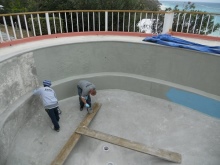
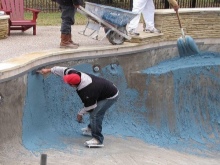
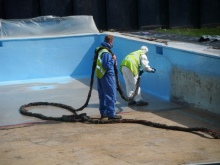
Fiberglass
Fiberglass is a fairly popular and reliable material from which swimming pools are made. It is easy to operate and has a long service life - at least 20 years. When repairing tanks made from this material, some tricks can be applied.If a tiny hole is found that gives a minimal outflow of water, then you can simply cover it with a waterproof sealant. There is no point in patching such damage.
If the crack is decent, then the sealant will no longer cope with it and you will have to glue it. This requires a repair kit, which includes vinyl patches and glue. It is better to use the composition recommended by the pool manufacturer, as a last resort, "Moment" will do. If the tank is located above the ground, you need to glue the patches on both sides - this will increase the reliability of the patch. If the reservoir is buried, then there is no way out, and you will have to eliminate the leak on one side.
For repairs, you will need to pump out water, since gluing in water is a short-lived solution. Then you need to dry and degrease the place where the leak was eliminated, spread glue and apply patches.
It should be remembered that the patches must be under pressure for at least 12 hours, and preferably a day for more reliable adhesion of surfaces.
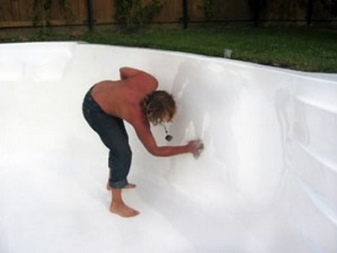
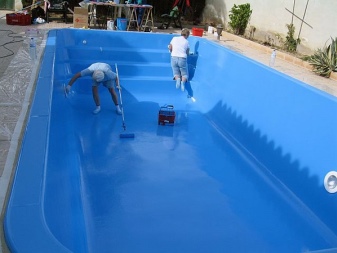
PVC film
If the pool itself is made of a different material, but PVC film is used as a covering, repairing a gust is also very simple:
- we pump out the water, remove the debris and remove a piece of damaged film;
- cut out the patch to the size of the damage and put it in place;
- we solder the contact points with a special hairdryer and treat it with a sealant;
- wait until it dries up and fill the reservoir.
In the case when the pool is inflatable and made of PVC, it is quite easy to eliminate the leak. To seal a hole, you first need to find it. If the tank is small, then we lower it into another container with water and observe from which point the air bubbles will go, mark the place with a marker. But if the container is large, then you will have to use soap suds to find leaks. Beat the foam, pump up the pool and use a brush to apply it to the surface of the tank over the entire area.
We mark all the places where the foam is bubbling - this means that the breakdown is at these points.
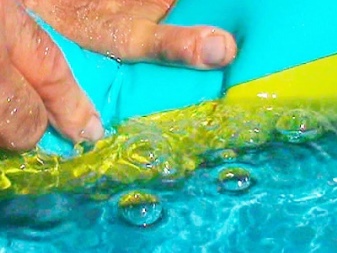
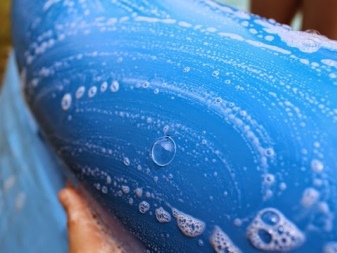
As a temporary measure, you can use waterproof tape or tape, but this is not reliable. To seal the hole once and for all, you need soft rubber patches, glue, degreasing fluid and sandpaper. Round or oval patches work best. The use of squares is not always effective, since the corners under the pressure of water can move away, and the repair will go down the drain.
The procedure here is almost the same as when repairing a fiberglass pool. The only thing is that the bonding points must be cleaned with sandpaper. Then we degrease, apply glue and apply rubber patches.
The place of gluing can be clamped in a vice or put under the load for a long time (12-24 hours).
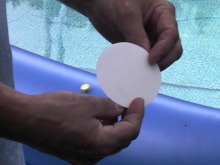
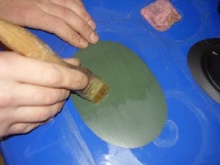
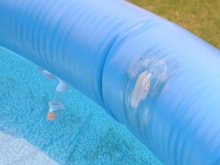
It is also worth paying attention to the fact that water can also decrease through various additional equipment: countercurrents, filters, pumps, etc. For the repair of swimming pool equipment, you need to buy only original spare parts. Replicas do not last long and will bring additional problems.
Most likely, to eliminate defects in the equipment, you will have to contact a specialist - this will save time and nerves.
The only difficulty is the financial issue, because labor and repair kits are not cheap.
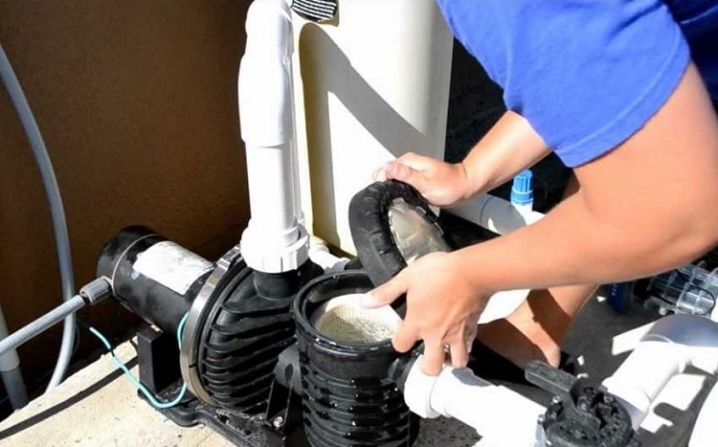
Prevention of malfunctions
In order not to deal with the elimination of leaks, you need to monitor the condition of the equipment in the pool and perform a few simple rules.
- Inflatable pools are best placed in the shade. If they stand in the sun, then do not leave them there for a long time, since they can deteriorate with strong heating.
- When installing and cleaning the pool do not use tools with sharp edges.
- Choose a place for a reservoir so that so that trees and bushes are at a safe distance from it.
- The reservoir must be installed on a flat area.
It is advisable that pets do not fall into the pool, because they can damage it with claws and teeth.
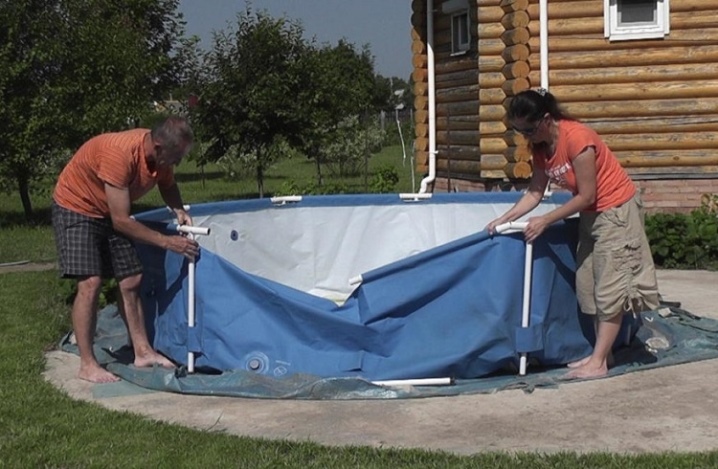
You can find out how to repair a frame pool below.



































































The comment was sent successfully.